It almost broke fire chief Terry Conrad’s heart when he had to smash the 250 year-old stained glass windows of St. John’s Anglican Church in the centre of Lunenburg’s historic Old Town on the night of October 31, 2001. This place was more than a National Historic Site and an iconic landmark in this UNESCO-designated town: St. John’s was the heart and soul of this small Nova Scotia community, and had seen generations of baptisms, weddings, and funerals in the community, including in Conrad’s own family. This was Lunenburg’s ‘Notre Dame’.
But Conrad didn’t have a choice. Destroying the stained glass windows was the only way to get his fire hoses inside to battle a blaze that had erupted late that Halloween night and that had already decimated much of the Gothic church. The steeple over the front doors that housed the massive chimes was compromised, and the overhead bells were threatening to fall at any moment. So he made the decision to break the decorative windows in order to access the flames, and together with 146 other firemen from around the province, managed to douse the fire after a 15-hour marathon.
But by that point, almost two-thirds of the historic church was gone.
Lunenburg’s Resilience Rises to the Challenge
For the residents of Lunenburg, the 2001 fire was a devastating blow to the community, a community that like the rest of the world had been rocked by the terrorist attacks of September 11th less than two months before. Perhaps it was this timing that rallied the residents and gave them even more determination to rebuild their beloved church, rather than bulldozing what was left and replacing it.
But the task was a daunting one and it would take the effort and expertise of many people in the community – and elsewhere – to restore what had been lost. It began with salvaging what was left in the church that hadn’t been destroyed by fire or damaged by water: the altar, the baptismal font, lecterns, pews and commemorative plaques.
Then a call went out to the community for any photographs that may have been taken at weddings, funerals, and any other church functions, and in particular those ‘badly framed’ photos that showed too much floor, or roof. Those details would become invaluable when it came to rebuilding St. Johns, because as a part of the UNESCO-designated Old Town, any restoration of the structure would need to be meticulous and as authentic as possible.
Local Stained Glass Artisans Lend a Hand
All of St. John’s Anglican Church’s 27 stained glass windows (many of which had been acquired from England or had been installed as memorials over the years) had been shattered or badly damaged during the blaze. Luckily, Helga and Norbert Sattler who lived in a nearby town, happened to be stained-glass artisans who originally hailed from Germany, and had a studio where they restored and crafted stained glass. The Sattlers offered to help restore the windows, and began the arduous process by salvaging glass shards and lead from the rubble to incorporate into the new windows. Then the jigsaw puzzle-like work began, piecing together what was left, and re-creating what had been lost, including the painted figures and detailed scenes. The new windows had to match not only the colours and design of the originals, but also the original artists’ technique and style of portraiture.
Parks Canada Photos Helped, Too
Fortunately, Parks Canada had documented St. John’s extensively when they gave the church its designation as a National Historic Site in 1994, so there was a lot of material available in the archives as reference, including photos of the windows, and even 19th century drawings that were available for the builders to use.
Shipbuilding Skills Helped with the Roof
Since the roof of St. John’s was completely gone, it fell to local shipbuilders to put their woodworking skills to the test in rebuilding the vaulted, beamed ceiling. The massive wooden beams that make up the roof were sourced locally whenever possible, and the interior required more than 30,000 feet of lumber.
It was perhaps a blessing in disguise for some of these craftsmen, as the need for constructing ships and dories had fallen to the wayside, and this gave them the opportunity to use their talents in a different application.
Looking up at the roof of the church, there is a resemblance to the traditional Nova Scotian fishing dory, so those skills were perfectly adapted to the task.
The ‘Mariner’s Sky’: Not Just Random Constellations
Another feature in the ceiling over the altar that needed to be carefully restored was the pattern of gilt stars depicted on the deep blue vaulted panels, known to locals as the ‘Mariner’s’ Sky. But when a local astronomer at Saint Mary’s University in Halifax was consulted to ask for help recreating the star positions, he recognized the Perseus constellation but it seemed a little out of place.
By using a computer model to back-date the position of that constellation, he discovered that the placement of stars in the church ceiling represented exactly where the stars would have appeared over Lunenburg at the time of Christ’s birth, at sunset on Christmas Eve – 2,000 years ago! How the original artist who painted that ceiling in the early 1900s would have known that, without the help of a computer, is one of St. John’s enduring mysteries.)
Disney Helped Make Dreams Come True, Too
A source for more visual reference actually came from an unlikely source: the Walt Disney Company, who had used the church when they were filming the movie Simon Birch here in 1999 (a film that was loosely based on A Prayer for Owen Meany.) Disney willingly offered up their production images for reference which provided very recent photographs to help with the rebuilding.
FUN FACT: The vibrant colour palette that Lunenburg’s houses are known for is relatively new, since residents and businesses only began using these hues in the last two decades or so. The more traditional colour scheme would have been white with black trim like you still see on St. John’s Anglican Church. (Disney actually needed to paint the church all white to better represent its supposed New Hampshire location. But the production crew repainted the signature black trim when they were done. )
3 Years and $7 Million Later
Normally a reconstruction project of this scale and difficulty would meet with delays in both funding and execution, but here again, Lunenburg’s community spirit and commitment to the project came to the forefront. Within just three years, not only had the $7 million dollars been raised to fund the re-build (much of which was contributed by private donors), but the work itself was complete. And throughout the entire process, the church had kept on holding services for its congregation within the community.
Today, it’s hard to believe that almost everything in the church isn’t original. The care and attention to detail shows in every aspect of the interior and exterior, and if it wasn’t for the informative photos documenting the disaster inside the entrance, visitors would never know what had happened here that Halloween night.
In fact, Henk and I had visited the church because we were intrigued by its unusual black and white colour palette, and it was only when we stopped to read these documents that we discovered the story behind St. John’s long history, the fire, and its amazing rise from the ashes – which made its beautiful interior that much more impressive.
A Little Faith Goes a Long Way
The story of the conflagration that almost destroyed St. John’s Anglican Church in Lunenburg and the incredible restoration that followed is more than just a tale of disaster or a lesson in how to rebuild an historic icon. It’s an example of what can be accomplished by people when they all work towards a common goal, and when they have faith in themselves as a community.
Which should be of some comfort to long-retired fire chief Terry Conrad, because although those beautiful stained glass windows were broken that night in 2001, Lunenburg’s spirit certainly wasn’t.

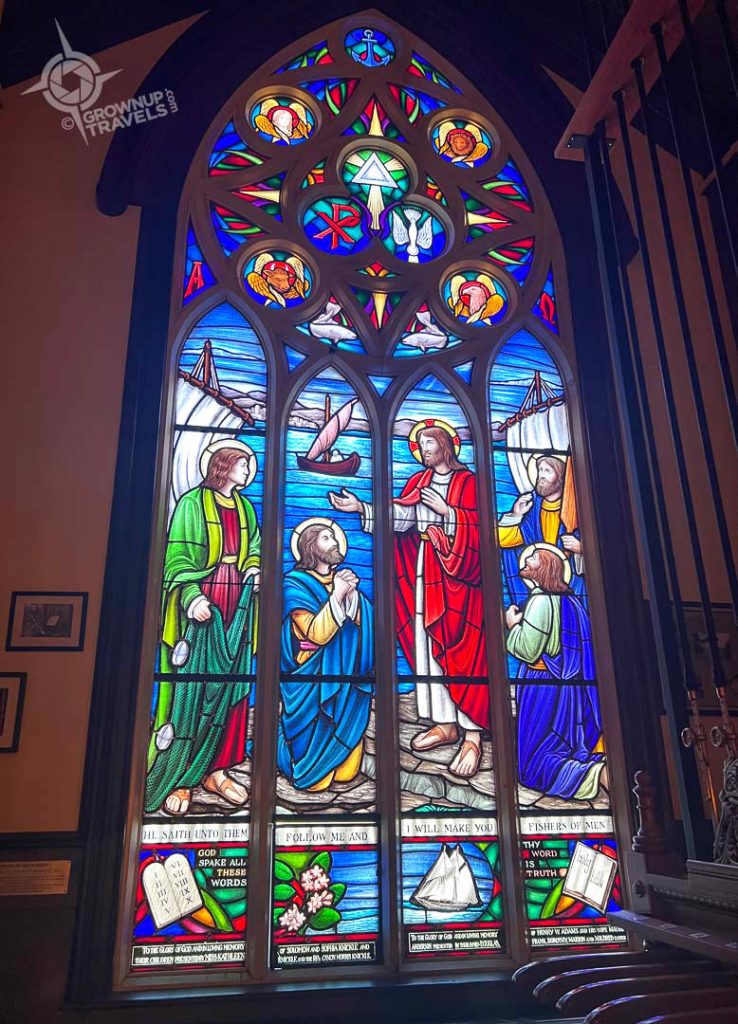
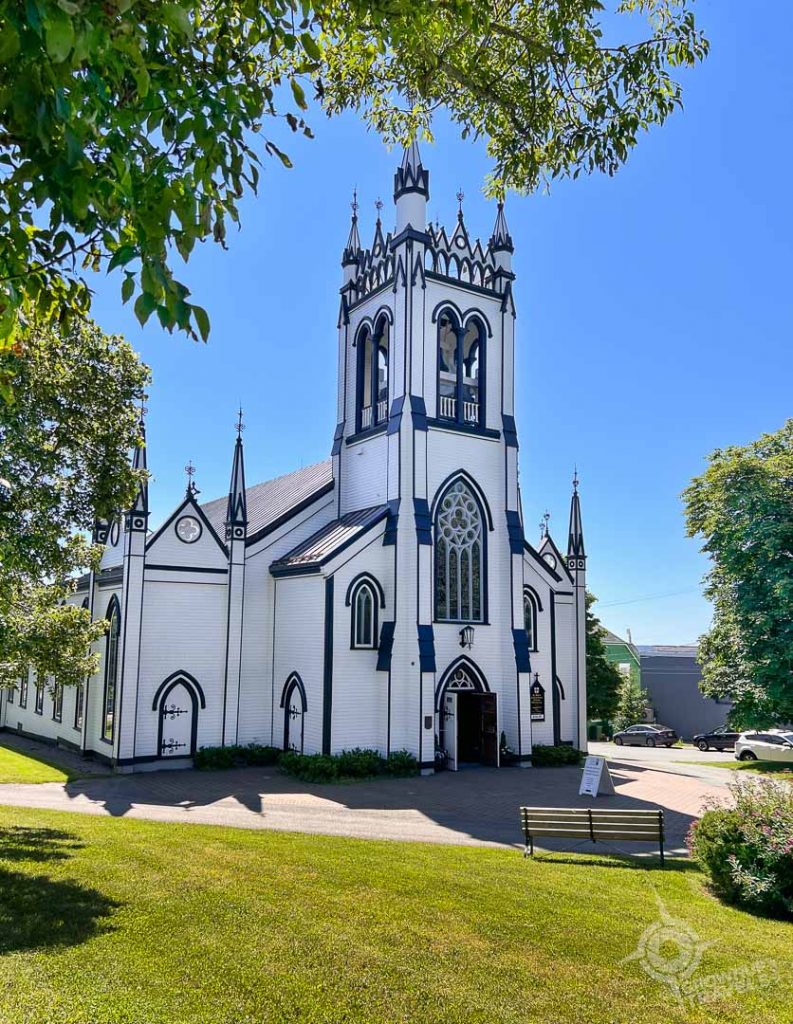
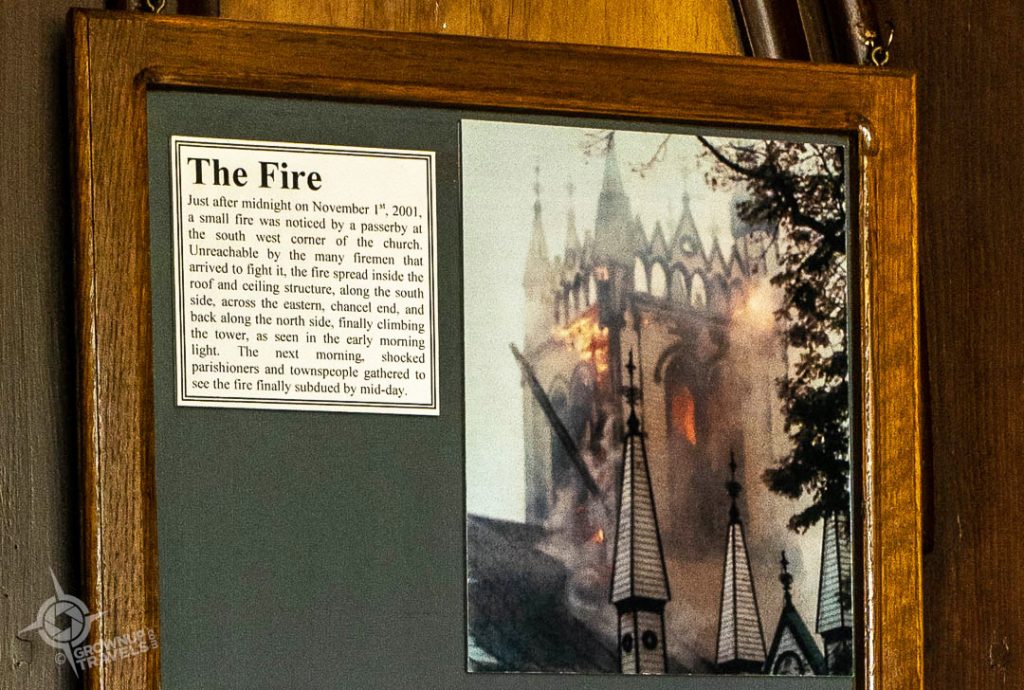
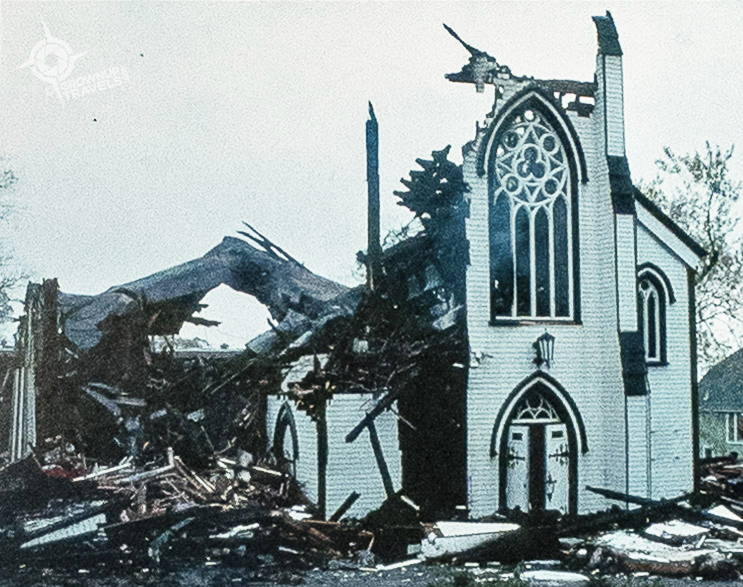
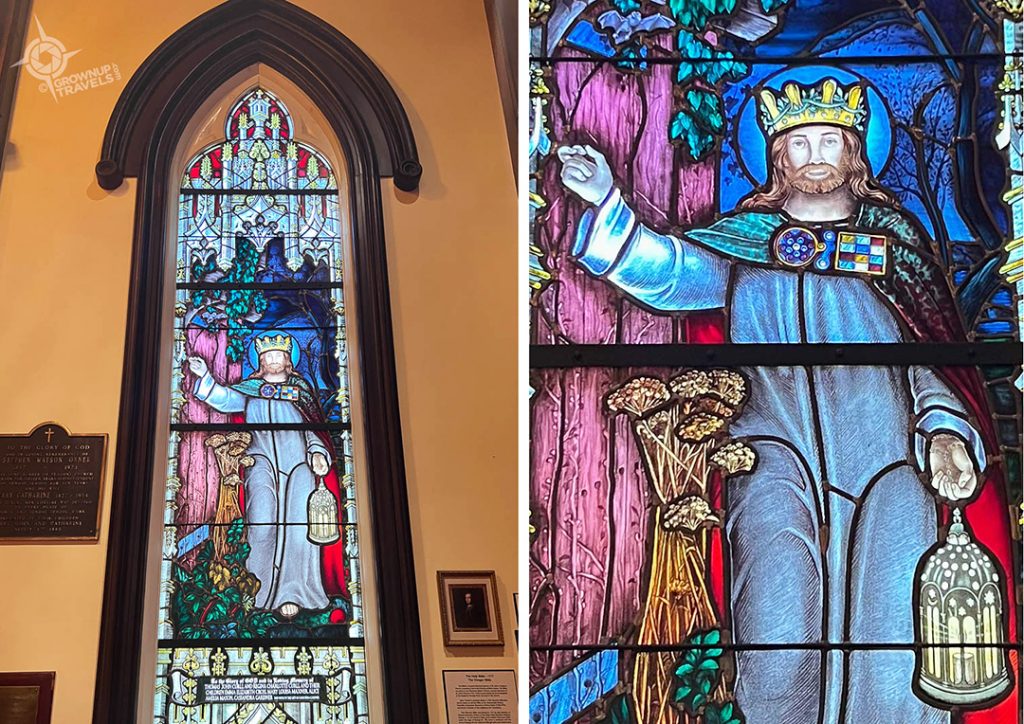
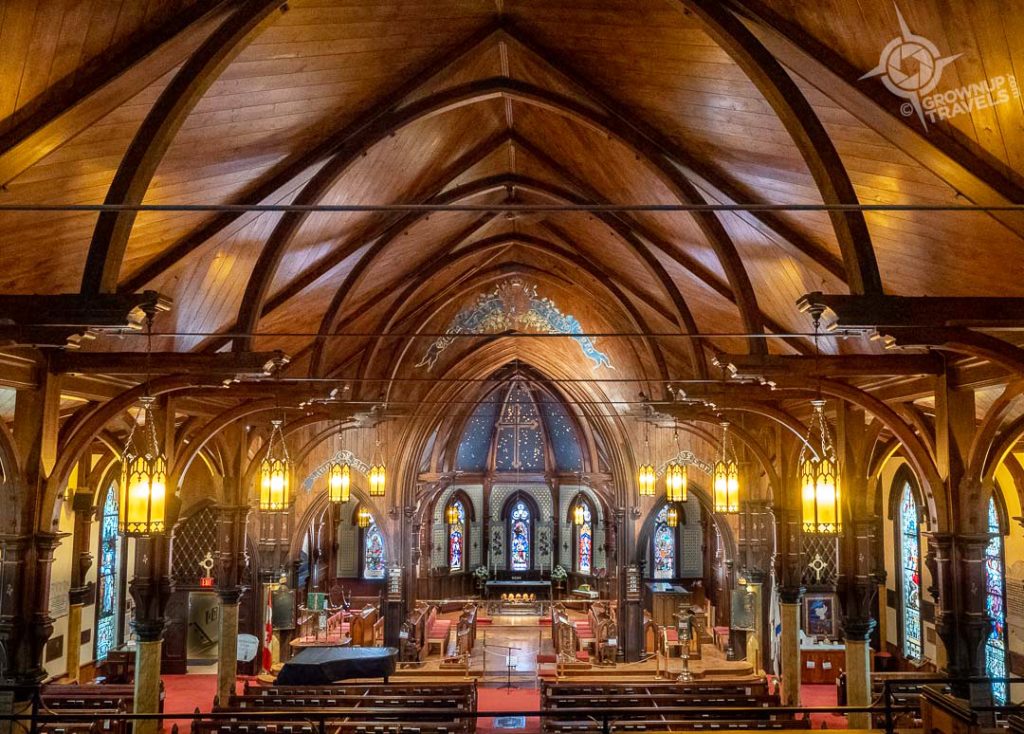
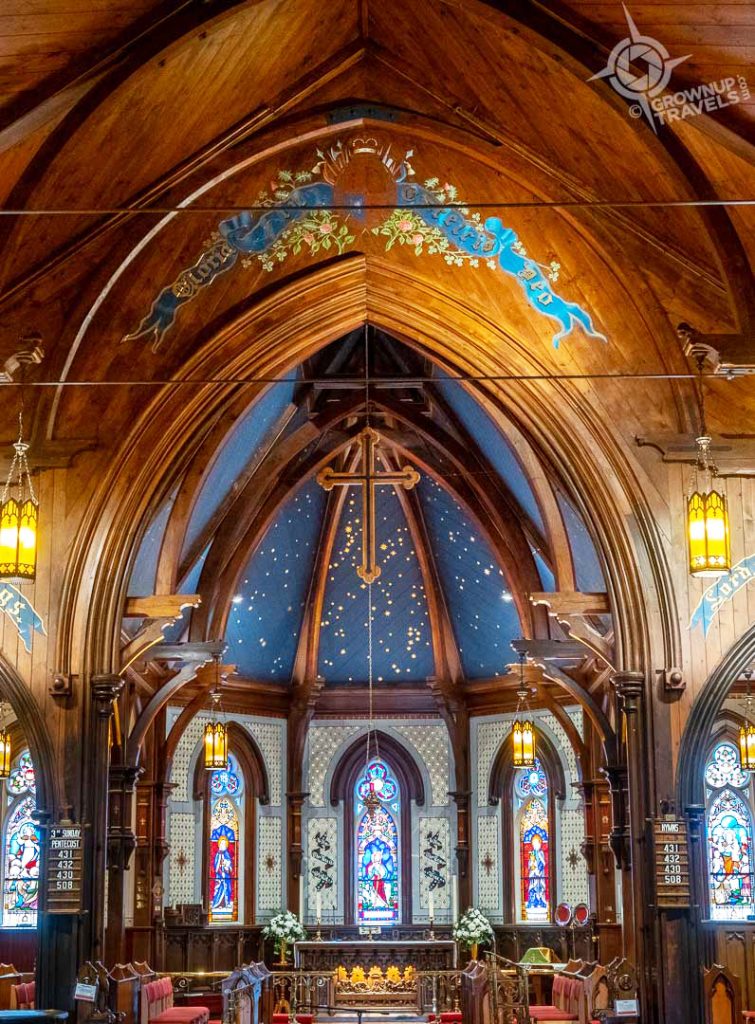
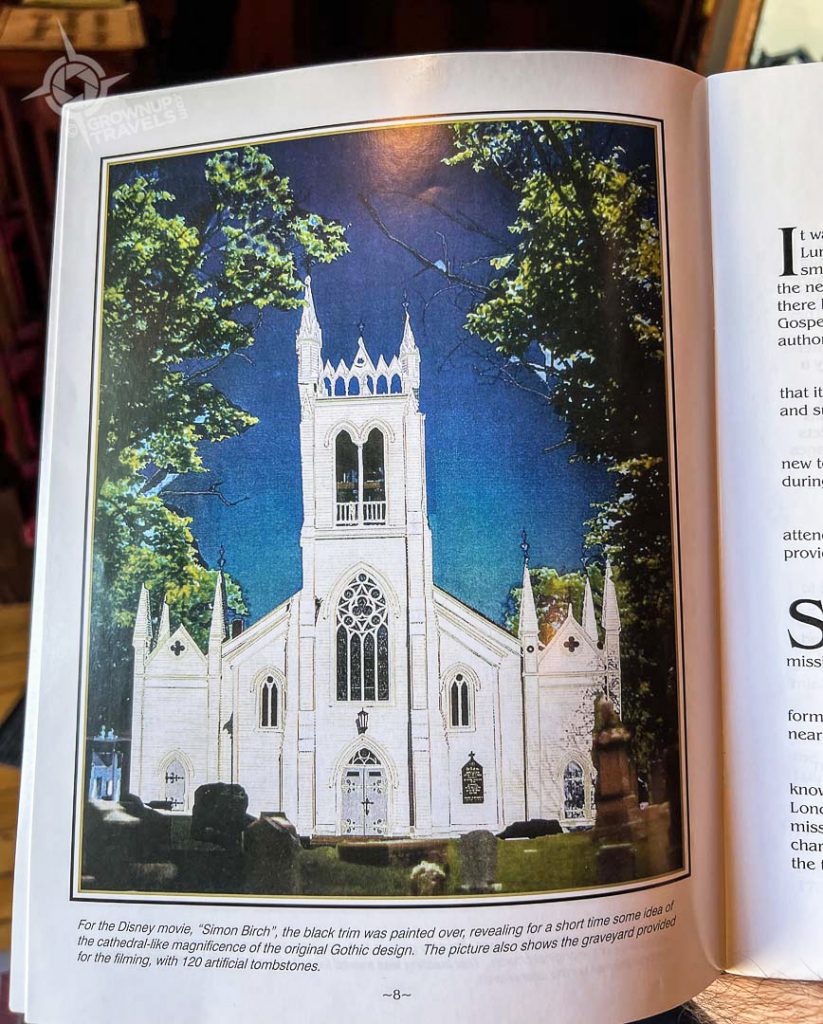
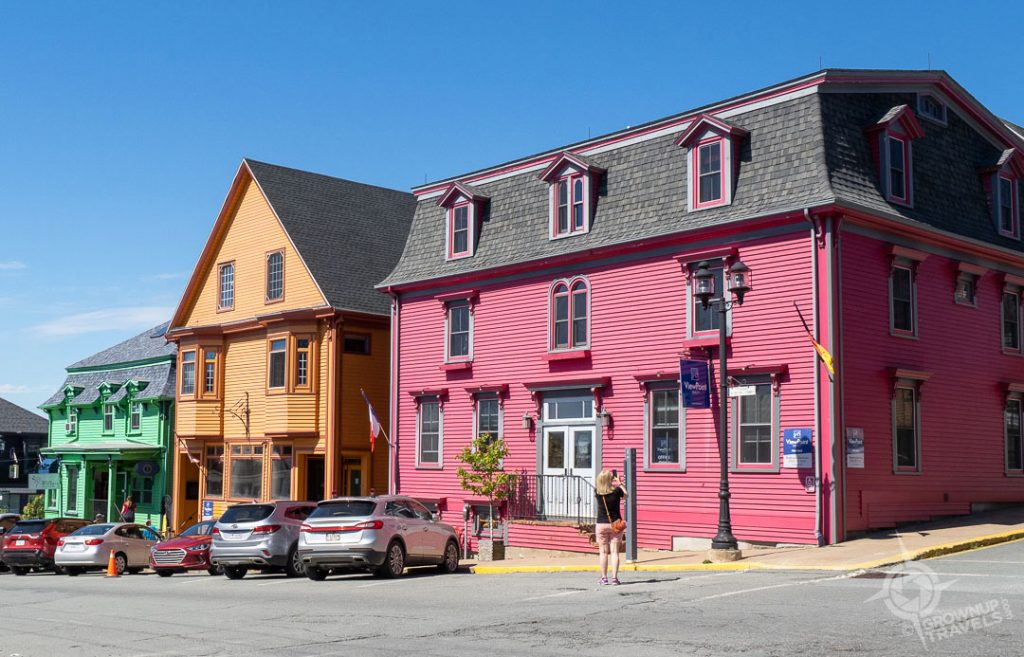
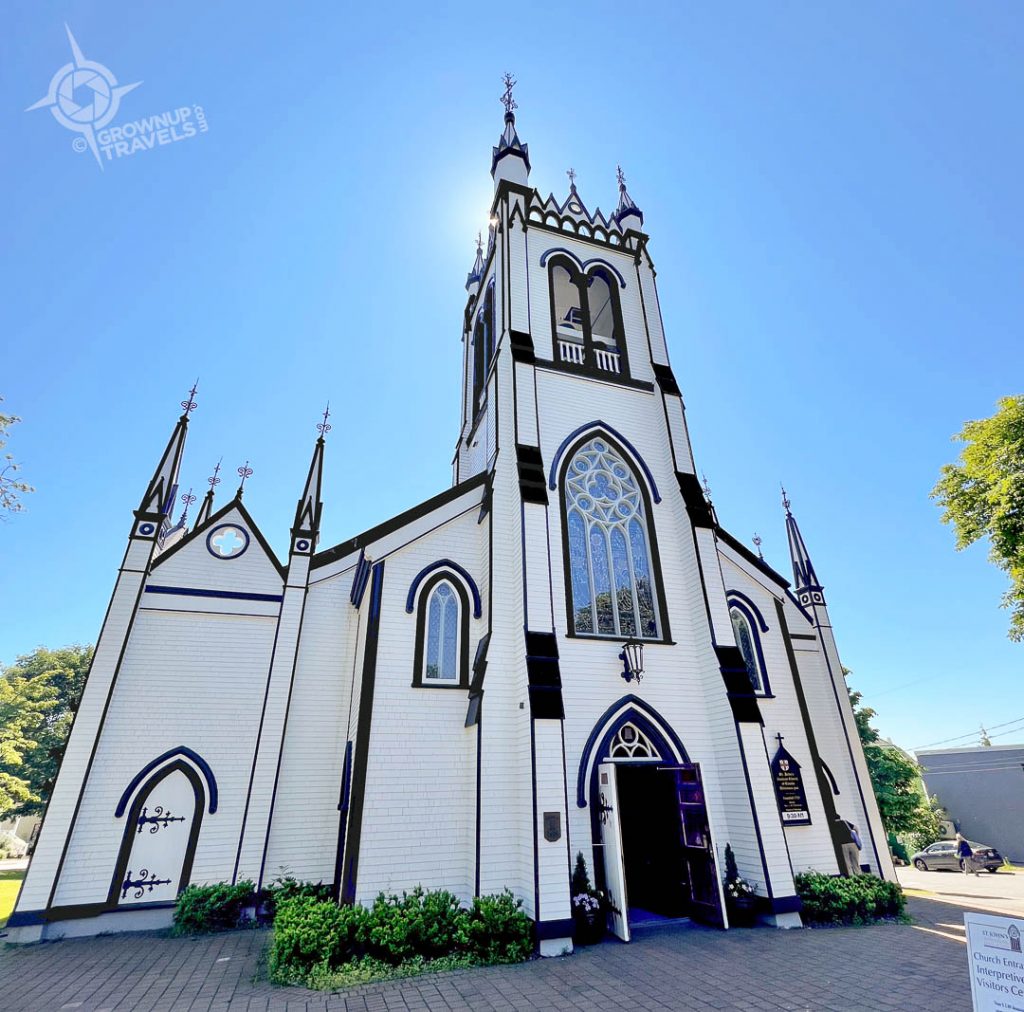
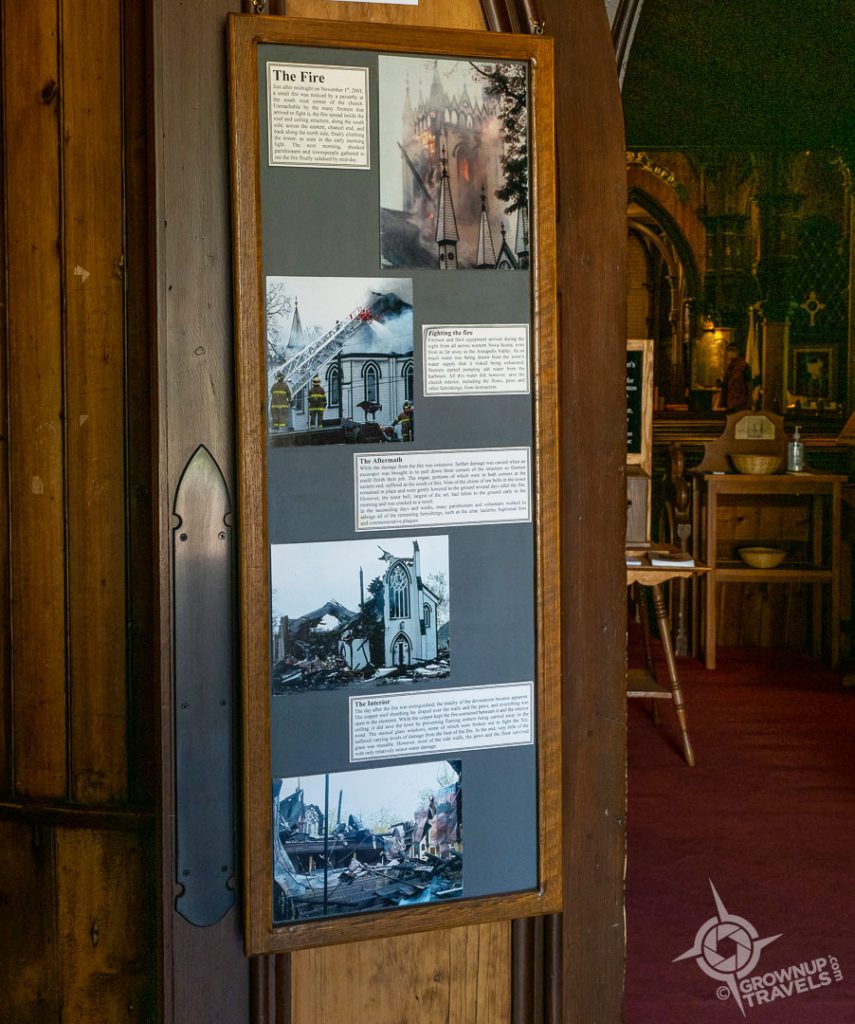
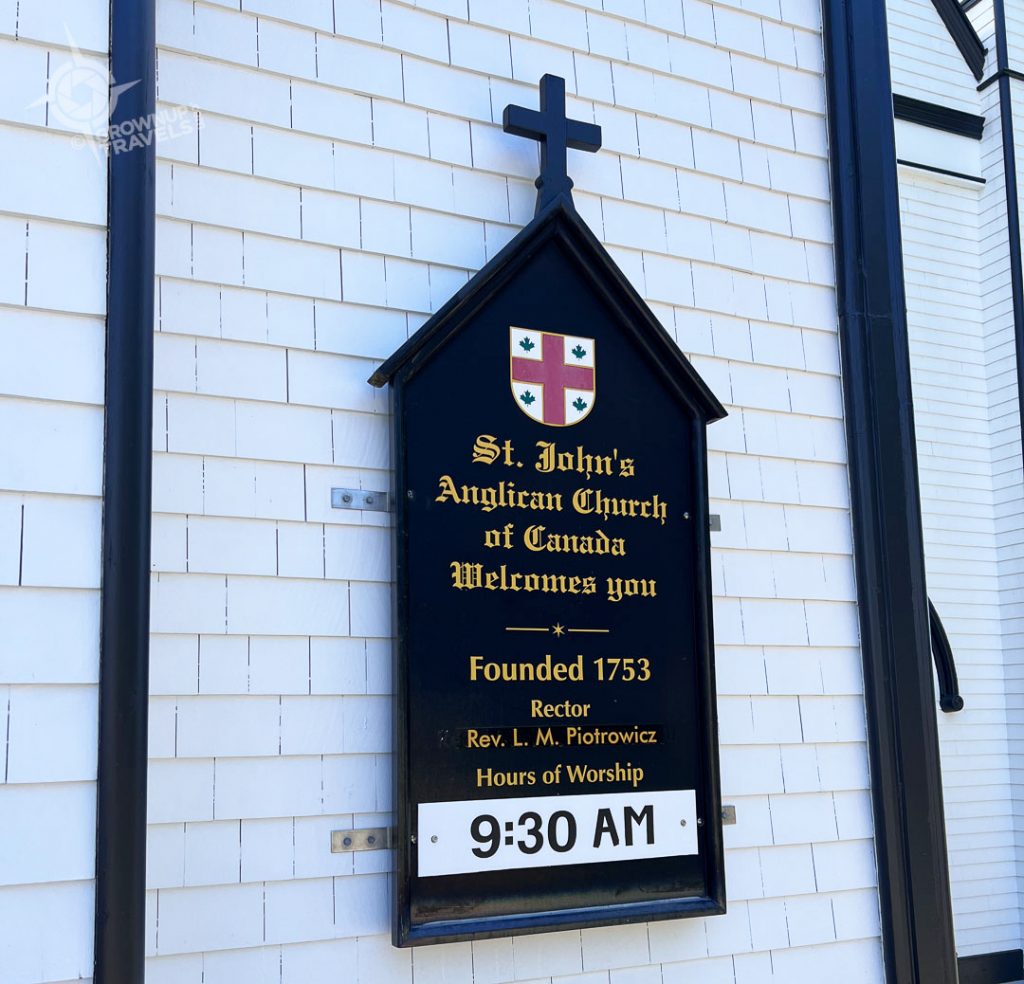
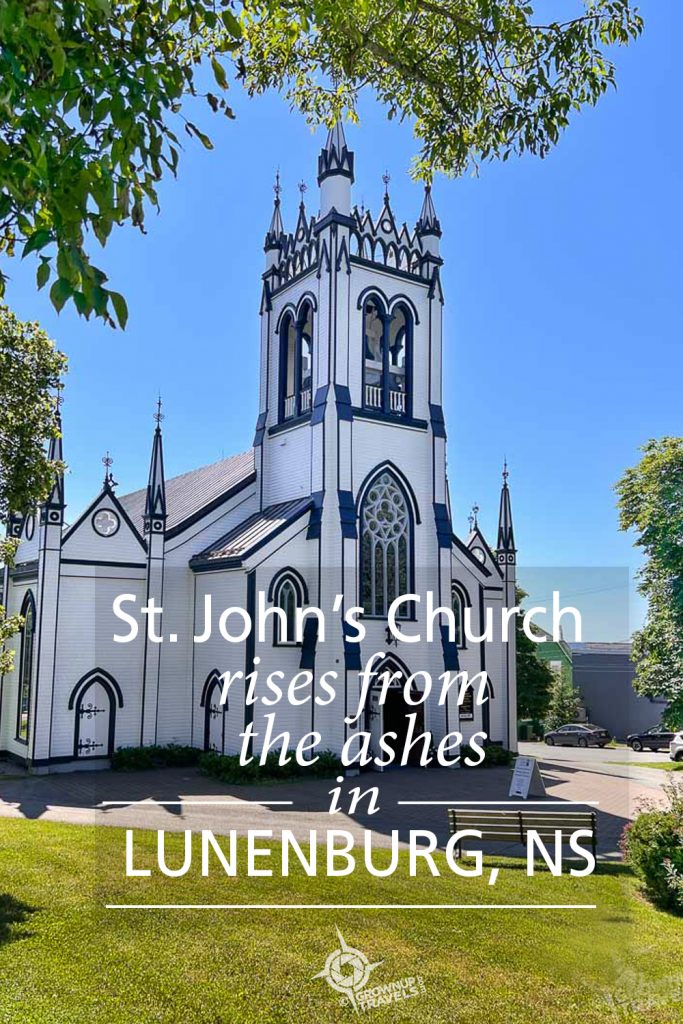


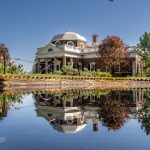








I am glad they got there meeting house back from the ashes . Also glad that there are still people in the world that feel odd without their “Sunday go to meeting spot ” to frequent .
Awesome statement of devotion to a celestial ideal . Thanks for posting !
This church is on my bucket list of places to visit .
When there is a will there is a way
They definitely had the will, and fortunately, local artisans with the ‘way’.
So true